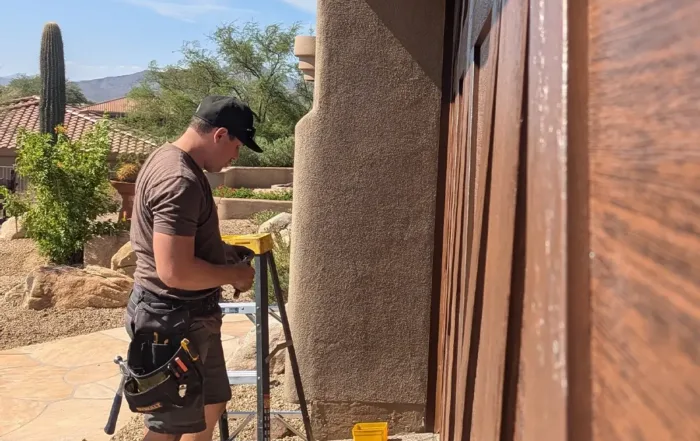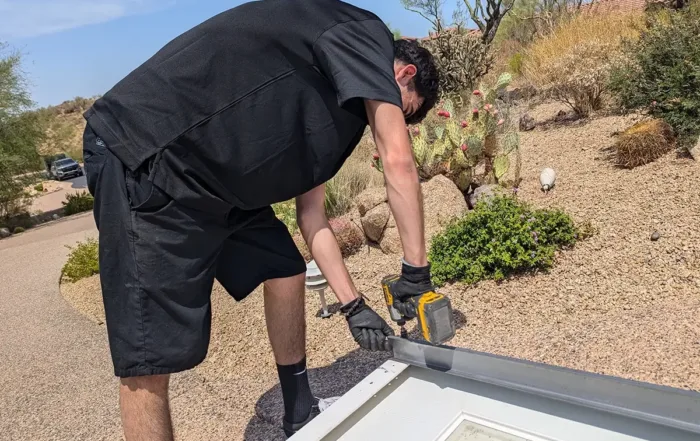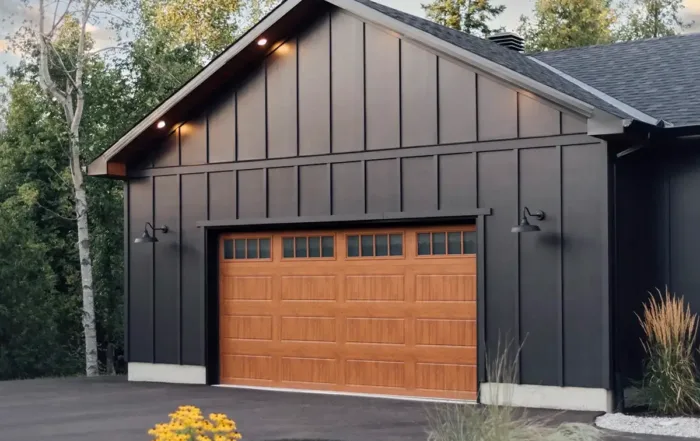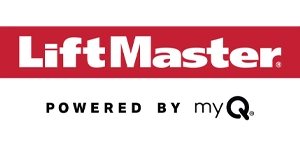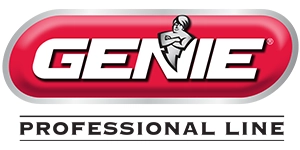Owning a home means maintaining all parts of your property; the garage door is no exception. It’s a major element that not only secures your vehicle and home but also significantly impacts the appeal and value of your property.
A well-maintained and functional garage door can boost a home’s value by nearly 4%, with about 80% of potential homebuyers considering the garage an essential factor when making purchasing decisions. However, like any frequently used home feature, garage doors can encounter several common issues. Let’s understand these usual problems and how to solve them.
1. Worn-Out Garage Door Rollers
Garage door rollers are important components that allow your door to glide smoothly along the tracks. However, given their frequent use, these rollers can wear out and degrade over time, typically requiring replacement every five years for optimal performance. Worn rollers can make operating the door noisy and more strenuous, and if left unchecked, can lead to more severe damage that might require costly repairs or even a complete door replacement.
Solution: To maintain the integrity and functionality of your garage door, it is advisable to inspect the rollers periodically for signs of wear or damage. If you notice problems, or if it’s been five years since the last replacement, consider hiring a professional garage door service. Specialists in garage door repair in Tempe, AZ, or garage door repair in Chandler, AZ, can provide a swift and efficient replacement of worn rollers, improving the door’s operation and longevity.
2. Automated Garage Door Won’t Close
An automated garage door is good for convenience and security but can encounter issues that prevent it from closing, such as misalignments or blockages affecting the safety sensors. These sensors are designed to prevent the door from closing if there’s an obstruction, ensuring safety. However, frequent use and external factors like dirt buildup or physical interference from pets and family members can misalign or block these sensors, causing the door to refuse to close properly.
Solution: First, check the alignment of the safety sensors located at the base of the door frame. Make sure they are pointing directly at each other and that no obstructions are blocking their line of sight. Clean the lenses with a soft cloth to remove any dirt or debris. If the door still won’t close, the issue might be more complex, such as electrical problems or issues with the door track. In such cases, it’s wise to contact professional services for garage door repair in Glendale, AZ.
3. Neglected Operator/Motor Rail Lubrication
Proper lubrication of the garage door’s operator and motor rail is essential for smooth and efficient operation. Some garage door openers, particularly those with a screw drive, require regular lubrication to prevent friction and wear on the moving parts. However, it’s essential to remember that while screw drives need lubrication, chain and belt drives do not. This is a common misconception that can lead to unnecessary and potentially harmful maintenance.
Solution: Check the manufacturer’s instructions to determine if your garage door opener requires lubrication and the recommended frequency and type of lubricant to use. Generally, lubricating the screwdriver operator rails every one to two years is sufficient. Use a lubricant specifically designed for garage doors to avoid attracting dirt and debris that can gum up the mechanism. If you are unsure how to properly lubricate your garage door or if you suspect the opener needs more extensive maintenance, consider hiring a professional for garage door repair in Phoenix, AZ.
4. Unadjusted Garage Door Operator/Motor
As garage doors age, their operators or motors can start losing efficiency due to natural wear and tear or shifts in the door’s alignment. This loss in efficiency might manifest as the door failing to open or close fully, or behaving erratically during operation. The root cause often lies in the need to adjust the limit switches, which control the points where the door stops opening or closing.
Solution: Adjusting the limit switches means first locating them on the side of the motor unit and then adjusting them to refine the door’s stopping points. This task requires precision, as small adjustments can significantly change the door’s operation. If you’re uncomfortable performing these adjustments yourself or if you’re unsure about the correct settings, it’s wise to ask for professional help. Services for garage door repair in Surprise are well-equipped to handle such adjustments.
5. Overlooked Garage Door Hinge Lubrication
Regular lubrication of garage door hinges is an easy yet essential maintenance task that can significantly extend the life of your door. Hinges that are not lubricated can become stiff, noisy, and eventually wear down, which can lead to more serious mechanical failures. Proper lubrication ensures that your door operates smoothly and quietly, reducing stress on the garage door opener and other components.
Solution: Annually applying a suitable lubricant, such as WD-40 or a silicone-based lubricant, to the hinges can prevent a lot of the common wear and tear issues associated with daily garage door use. Make sure to clean any dirt or debris from the hinges before applying lubricant. For comprehensive maintenance or if you notice that lubrication alone doesn’t resolve hinge noises or stiffness, it may be time to call in experts for garage door repair in Queen Creek, AZ.
6. Unusual Garage Door Noises
Noises like creaking, squeaking, or grinding are common indicators that your garage door requires some maintenance. These sounds can be attributed to many causes, including worn rollers, needing lubrication, or frayed cables. A loud bang, in particular, is a serious sign, often indicating a broken spring. This is a critical issue that can affect the safety and functionality of your door.
Solution: Regular maintenance checks can help identify the source of noise and whether it signifies a minor issue like lubrication needs or something more significant like roller or cable replacement. For routine lubrication, focus on the rollers, tracks, and pulleys, but avoid applying grease to the springs, which can attract dirt and debris. If you encounter a loud bang or if the door is unusually noisy despite regular maintenance, it’s essential to seek professional help for garage door repair in Buckeye, due to the potential risks involved.
7. Sticking or Stuck Garage Door
A garage door that sticks or becomes completely stuck can be a significant inconvenience and may also pose a safety risk. This issue is commonly caused by obstructions in the wheel tracks, such as rocks, dirt, or other debris, which can hinder the door’s smooth movement. Also, inadequate lubrication can cause the components to become stiff, further contributing to the problem. Over time, the tracks themselves may become bent, or other mechanical components may fail, preventing the door from operating correctly.
Solution: First, visually inspect the tracks for any obstructions and clear them away. It’s also a good idea to clean the tracks with a brush to remove any accumulated dirt and debris. Apply a silicone-based lubricant to the tracks and rollers for smooth operation. If the door still sticks, check for any visible signs of damage or bending in the tracks. If a bent track or broken component is suspected, it’s safest to contact professionals for repair. Services for garage door repair in Avondale, AZ, are equipped to handle these issues effectively, helping your door operate smoothly and safely.
8. Cracks and Gaps in the Door or Sealant
Cracks and gaps in your garage door or its sealant not only detract from the aesthetic appeal of your home but can also lead to security vulnerabilities and energy inefficiencies. These imperfections can allow air to escape, impacting your home’s insulation, and may also let in pests and water, which can cause further damage.
Solution: For minor cracks and gaps, use caulk or weatherstripping to seal these areas effectively. Make sure to clean the surface thoroughly before applying the new sealant to make sure it adheres properly. For larger cracks or if the door is warped, this might indicate more serious issues that require professional attention. Contacting a specialist for garage door installation in Phoenix can provide you with replacement options and professional advice on whether a repair or a full replacement is necessary, depending on the extent of the damage.
9. Garage Door Remote Signal Interference
Garage door remotes are convenient, but they can sometimes encounter signal interference, which disrupts their operation. This interference can be due to various sources, most commonly nearby electronic devices and radio frequencies. When the remote fails to work at times, it can be frustrating and may leave you unsure whether your garage is secure.
Solution: If you experience issues with your garage door remote, the first step is to reset both the remote and the opener. This can sometimes clear up minor signal disruptions. Also, check for any new electronic devices in your home that could be causing interference and move them if possible. If problems persist, the issue may be more complex, such as a malfunctioning remote or opener. In this case, it’s advisable to consult with garage door repair professionals.
10. Garage Door Refuses to Stay Open
When a garage door refuses to stay open, it often points to an issue with the spring system. The springs are responsible for balancing the door’s weight and assisting in its smooth operation. If these springs become worn out or break, the door will not be able to stay open and may close abruptly, posing a risk of injury or damage. This is a common problem that can significantly affect the usability and safety of your garage door.
Solution: Due to the high tension involved in garage door springs and the potential danger in handling them, it is strongly recommended to avoid DIY repairs. Instead, contact a professional service for garage door repair in Tucson. Trained technicians have the proper tools and expertise to safely assess and repair or replace faulty springs. They can also perform a comprehensive check to see that all other components are in good working order, restoring the functionality of your garage door.
11. Slow Opening and Closing Garage Door
A garage door that opens and closes more slowly than usual can be frustrating and may indicate underlying issues. Generally, this problem is related to the springs, which help to lift and lower the door smoothly. However, other elements, such as worn rollers, tracks, or lubrication issues, can also contribute to sluggish door operation.
Solution: It’s advisable to start with simple maintenance tasks such as lubricating the rollers, tracks, and springs with a suitable garage door lubricant for smooth movement. If this does not resolve the issue, the problem may be more complex, such as worn-out springs or a malfunctioning garage door opener. In such cases, professionals from garage door repair in Phoenix, AZ, are equipped to diagnose and fix the problem efficiently. They can replace worn parts, adjust the tension of springs, or service the door opener to restore your garage door’s speed and reliability.
12. Door Closes Too Quickly
A garage door that closes too quickly is not only a nuisance but a significant safety hazard, potentially leading to injury or damage to property. This issue often arises due to a snapped spring or cable, which is important for counterbalancing the door’s weight during operation. The door can slam shut uncontrollably without the proper tension these components provide.
Solution: If your garage door closes too quickly, it’s essential to address the issue immediately to prevent accidents. Contacting a professional garage door service for garage door repair in Queen Creek, AZ, or nearby areas, is the safest course of action. These technicians can quickly identify whether a broken spring or cable is to blame and will replace the faulty parts with high-quality components. They can also check the overall alignment and condition of the door to see that no other issues may contribute to unsafe operation.

